- Mark Grayson Guide: 21st Century Hero - June 8, 2023
- How Old Is Deadpool? - June 2, 2023
- Magneto vs Iron Man - May 5, 2023
Wonder Woman is the greatest heroine of all time. Period.
No other female character in comics is as recognizable or as revered. Diana Prince opened up the doors for all other heroines we admire today.
Yes, I’m incredibly biased when it comes to Wonder Woman. I’ve spent all my life voraciously absorbing media about the character. Wonder Woman is my favorite hero, and every time I see a product about her, I turn into that Fry meme. “Yes, just shut up and take my money!”
Still, that doesn’t make my statement less true.
In this Wonder Woman Universe guide, I’ll prove why and how Wonder Woman is the greatest of all heroines. By the end of this article, I hope you’ll be running to grab all my comic book recommendations, so you can be as much of a fangirl as I am.
A Hero for All
Wonder Woman’s trademark qualities: empathy, compassion, and diplomacy showed the comic book industry you don’t need to solve every conflict with violence. Her fierceness and admirable fighting skills made her a role model for women worldwide.
I know how much this is true from experience. Without Wonder Woman, I wouldn’t be as confident about my femininity as I am today.
The Child from Themyscira

Even though Wonder Woman’s had many incarnations throughout comic book history, her origin remains more or less the same every time. Diana is a lone child who’s never seen the world outside her home, Themyscira — an island populated only by warrior women.
Thus, it is no surprise Diana becomes curious when pilot Steve Trevor crashes on the island. This meeting inflames Diana’s desire to know more about the outside world and make it a better place.
So, she makes her most challenging decision yet: leave her home.
She leaves the place where she is a princess, adored by her sisters, and travels to an uncertain future. That’s shocking when you remember men are the reason for the amazons’ past ordeals.
No matter the version we’re discussing, the amazons have suffered greatly at the hands of men. That’s why Themyscira exists. The gods created an island where abused and tortured women could have a second chance and make a new home.
Still, Diana is moved by something greater than herself– the desire to help, to redeem humanity.
However, some people say Diana left her home because of a man.
This is a ridiculous assumption.
Even though there was a spark between Diana and Steve, there was no romance yet. I would like to remind everyone that this is not Disney; this is a story crafted by a man who believed in women’s empowerment,
Diana left Themyscira because she was a true hero. She had everything one could want; still, she couldn’t sit idly while the world outside burned in flames.
She knew she had to do something more. She had to become Wonder Woman.
Powers and Weapons
Wonder Woman’s powers and abilities include:
- Superhuman strength;
- Superhuman durability;
- Superhuman speed;
- Superhuman reflexes;
- Superhuman agility;
- Superhuman stamina;
- Flight;
- Communication with animals;
- Accelerated healing;
- Enhanced senses;
- Master at advanced hand-to-hand combat;
- Master at swordsmanship;
- Master at archery;
- Master at lassoing.
Among her weapons are:
- The lasso of truth.
- The bracelets of submission.
- A golden tiara she uses as a boomerang.
- A magical sword capable of cutting through electrons.
Why is Wonder Woman Different from the Rest?
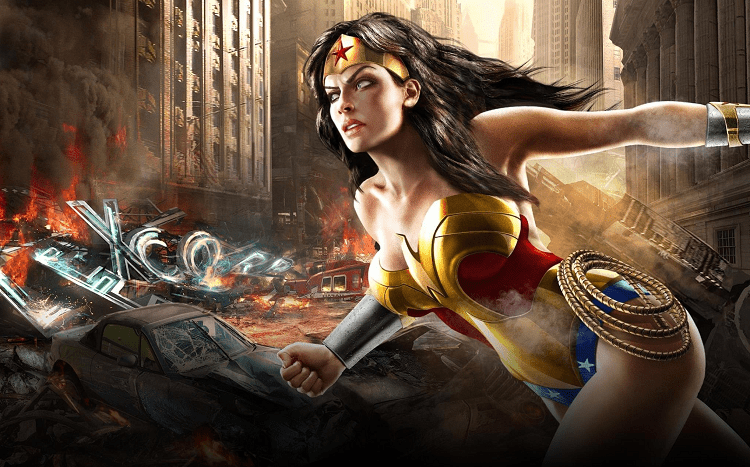
Wonder Woman sets herself apart from her colleagues.
But why?
The answer is in her creation story.
Wonder Woman was created by William Moulton Marston, an esteemed psychology professor. Or so he was until his polyamorous relationship with his wife, Elizabeth Holloway Marston, and their former student, Olive Byrne, was discovered.
If you want to know more about this story, I recommend watching “Professor Marston and his Wonder Women.” As a Wonder Woman fan, I loved learning more about the life of her creator. As it’s the case with any biopic, this film is no perfect retelling of what happened, but I found it very informative and entertaining.
Scandal aside, I would like to point out Marston was a feminist. He was inspired by the strength and intelligence of his partners and brought these qualities into his creation.
Marston noted that all superheroes at the time solved conflict with fights. He wanted to create a new type of hero that embodied qualities such as compassion, diplomacy, and patience.
The psychologist wanted to show that traits generally associated with women were valuable; these weren’t weaknesses but possible solutions to conflicts on the comic book pages.
I love this approach because he not only stood up for feminism but created a new role model for heroes, male and female alike. One that proved you can solve conflicts in many ways before resorting to fist fights.
Meet the Multiverse of Wonder Women
Now things start to get complicated! If you want to understand Wonder Woman in-depth, you must learn about all her different versions.
Comics that run for a long time must repeatedly reinvent themselves to keep people’s attention. This regular reinvention results in crazy storylines and many, many reboots.
However, this entanglement will become child’s play to you with the following explanation.
First Incarnation
Wonder Woman’s first incarnation spans from her debut in 1941 to 1986, when the Crisis on Infinite Earths saga rebooted her origins. Most of her adventures are compiled in Wonder Woman Vol. 1, which ran for 614 issues.
In this section, I’ll walk you through some of the most outrageous moments of this era.
A Goddess is Born

Wonder Woman debuted in All-Star Comics #8, published in 1941. As the story goes, Queen Hyployta wanted to have a daughter so much that she molded a baby from clay and asked the gods to bring her to life.
Thus Diana was born and grew up as the only child in Themyscira, an island populated only by amazons. She was blessed by the gods with Athena’s wisdom, Aphrodite’s beauty, and the speed of Hermes, among other gifts.
Years later, after she left Themyscira, the princess would join the American intelligence service to defeat the Nazis. With a new identity – Diana Prince – she embarked on wild adventures with Steve Trevor, her love interest, and her best friend, Etta Candy.
These two are Wonder Woman’s most important allies — their relationships with the character are explored in depth. Etta is a loyal friend always willing to help, while Steve is the prince charming with a twist.
He doesn’t rescue the princess — after all, she is stronger than him — but he is always by her side. I’m a big fan of this romance: they are as iconic as Lois and Clark.
While the stories under Marston’s tenure were typically ridiculous – as with most golden age comics– they featured strong feminist ideals. Things usually took a dire turn when he wasn’t the writer behind Wonder Woman, and that’s why we have some sketchy situations regarding the amazon princess.
The Justice Society’s Secretary
Justice Society’s initial run in 1942 showed patriarchy could ruin even the most powerful female hero.
For those unfamiliar with the name, the Justice Society was the Justice League’s predecessor. The team united various heroes to defeat threats all over the globe.
However, Wonder Woman didn’t fight side by side with her teammates because she was too busy being the team’s secretary. She often stayed behind during missions, and her job description was always included on the comics’ first page.
If you are outraged by this information, I guarantee you it is nothing compared to the rage I felt after learning this.
I could not believe my favorite hero, the character who had inspired me to be a strong and confident woman, had been treated so poorly.
This shameful stain in Wonder Woman’s history exemplifies how widespread sexism was during that time. Of course, there’s still much to improve, but this shows how far we’ve come.
A Goddess without Powers
Making Wonder Woman a secretary wasn’t the last dishonor coined by writers.
In the 1970s, things went sour once again: Wonder Woman lost her powers.
However, I must be fair and say this was an honest attempt to breathe fresh air into the comic, not an act of spite. Dennis O’Neil thought Wonder Woman losing her powers would show women they didn’t need superpowers to be badass.
The idea didn’t pan out as planned, and he eventually admitted it was a mistake.
I hated the concept, but I forgave Dennis because he made a good point. I may love Wonder Woman, but I wouldn’t dwell on it forever. Besides, Dennis was a fantastic writer who reimagined Batman and Green Lantern and made them popular again. All in all, he made an impressive contribution to comic book history.
Still, I think the whole idea of Diana training with a martial artist was stupid. While she may have lost her superhuman abilities, she retained her training in the amazonian arts of war. Learning a new form of combat as an excuse to become a better hero seemed redundant.
So, thank God this wasn’t an irreversible shift.
The Twelve Labors

During the 1970s, feminist icon Gloria Steinem wrote an outraged article in Ms. magazine about Wonder Woman’s power loss. The article caused quite the stir among comic fans and introduced a heated debate to the larger population.
At that point, the writers and executives realized they had messed up.
So author Cary Bates created a story (Wonder Woman Vol. 1 #212 – 222) where Diana had to undergo 12 labors to prove herself worthy of her powers.
I love this story due to the Greek-heavy plot referencing Hercules, and above all because it brought Wonder Woman back in all her glory.
Second Incarnation
Wonder Woman’s second incarnation collects Volumes 2 and 3 of the title series. This era was responsible for a bold new origin and some of the best stories ever written about the heroine.
All-New, All-Powerful Wonder Woman
George Perez did what Denny O’Neil failed to accomplish: a new, powerful, iconic Wonder Woman that ushered in a new era for the character.
Perez kept the origin essentially the same while tweaking a few things to create a compelling story. This version is marked by a heavy Greek Mythology influence, especially in the first arc — which focused on the villain Ares. This change results in rich worldbuilding and mythos that immersed fans like never before.
In addition, this comic is responsible for introducing a new Cheetah – one of Wonder Woman’s most iconic villains. However, even if I absolutely love Perez’s changes, I don’t stand by all of them. I hate that he erased Diana and Steve’s romance. In this version, Trevor marries Etta Candy, which I think is utterly bizarre and disappointing.
Still, this is a great run, full of exciting stories. After Perez’s departure, volume 2 would have other beloved writers that helped further establish Wonder Woman’s legacy, such as Greg Rucka and Phil Jimenez.
A 21st Century Woman

The 90s was a weird period for comics, and it was no different with Wonder Woman. However, the early 2000s would bring remarkable stories back in Wonder Woman volume 3. Writers like Gail Simone, Terry Dodson, and Rachel Dodson renewed Wonder Woman for the 21st century with new and exciting storylines.
Simone’s debut story, The Circle, is a compelling tale that examines superstition’s effects on people. The story depicts a group of Amazons who believed Diana was an anomaly that shouldn’t have been born. They tried to kill the baby and failed, but after several years, they returned to finish the job.
This story is fantastic for its complex portrayal of longing: the arc paints how the amazons missed motherhood. This feeling was so severe some women walked around with baby dolls to appease their maternal instincts. Thus, when Hypolytta’s “doll” was transformed into a real baby, some amazons felt betrayed, and conflict ensued.
It wasn’t all superstition but jealousy.
I thought that was a brilliant concept because no one had explored amazon’s feelings about motherhood up to this point. Besides, the profound psychological aspect of this narrative made the villains some of the most compelling in Wonder Woman’s publication.
New 52’s Controversial Legacy
Wonder Woman’s New 52 run was highly controversial for comic readers, despite being showered with critical acclaim.
I get it: the book’s incarnation of Wonder Woman and her mythos is highly different from what fans were used to. Some people felt like this wasn’t the Wonder Woman they knew. In a way, it really wasn’t, but the essence was still there.
I hold a special place in my heart for this title because Wonder Woman’s new 52 run was my comic introduction to the amazon princess. It was also the first time I read an entire run of an author instead of just an issue. It was love at first sight: I was addicted to it.
So I’m dead serious when I say the new 52 Wonder Woman title is fantastic — at least until issue 35, when author Brian Azzarello leaves. After that, the book is crap!
The saga introduces many changes to the heroine’s history. This time, the story Diana had been made of clay was a cover-up to the fact she was the daughter of Zeus. Thus she became a central point in the gods’ machinations for power and control.
Another twist: the amazons had children with men they lured in the sea. After birth, if the baby was a girl, they kept it; if not, they sent it away to work on Hephaestus’ forges. This is pretty chilling, but I like this type of savage storytelling because it is more in line with Greek Mythology.
In addition, the mix of Azarello’s creative recreation of Greek mythology and Cliff Chiang’s distinctive art — he is one of my favorite artists — provided a unique take on a beloved character. It’s bold, it’s sharp, and it’s emotional. It’s Wonder Woman if she was written for Vertigo instead of DC, which makes sense given Azarello’s track record.
I think this book is brilliant. It’s one of my favorite comic book runs ever. So if anyone says anything about it, I’ll just scream, “you don’t know what art is,” and leave.
It’s a fact comic book authors must find ways to revitalize decades-old characters. Even with the radical shifts, the new 52 succeeded where prior attempts had failed.
That’s already impressive enough for you to give this a try. Believe me!
Once Upon Rebirth
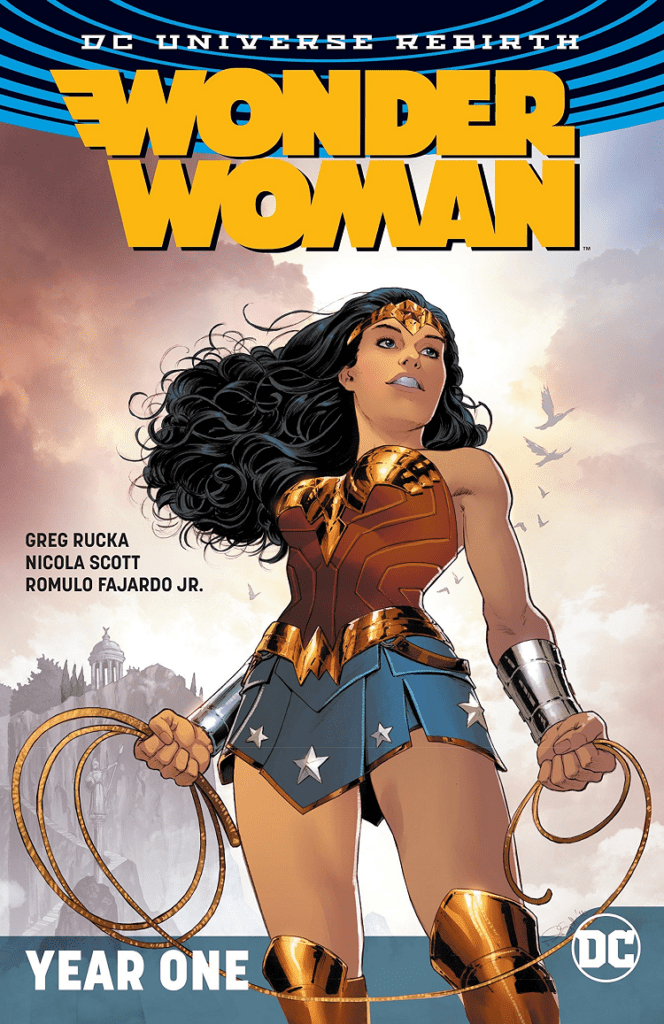
DC Rebirth is the best place to start reading Wonder Woman comics.
Wait, what? Am I throwing away the most iconic entry points, like George Perez’s run, in favor of the newest version?
Yes, I am!
Wonder Woman Rebirth is divided into two initial arcs: “The Lies” and “Year One.” “The Lies” comes in the odd numbers from 1 through 11, while “Year One” comes on the even ones, from 2 to 14.
Just a tip, I read Year One first and then the other arc — the back and forth between the two stories made me too dizzy.
The point is that “Year One” retells Wonder Woman’s origin for the billionth time, but it gets the best elements from each version. It’s an amalgamation of everything that worked through the years, so I believe it is the best place to start.
The Rebirth era is not a reboot that throws everything away, like the new 52, but one that brings back storylines. This is done with a new lens that deepens character conflicts with a 21st-century perspective.
I must say I thoroughly enjoyed everything I have read so far in this era.
Wonder Woman Characters
If you want a complete Wonder Woman characters guide, I have already poured my heart and soul into making one. There you’ll find every character I’ve ever seen in Wonder Woman comics — famous and obscure.
But for this article, I’ll stick to the basics.
Allies
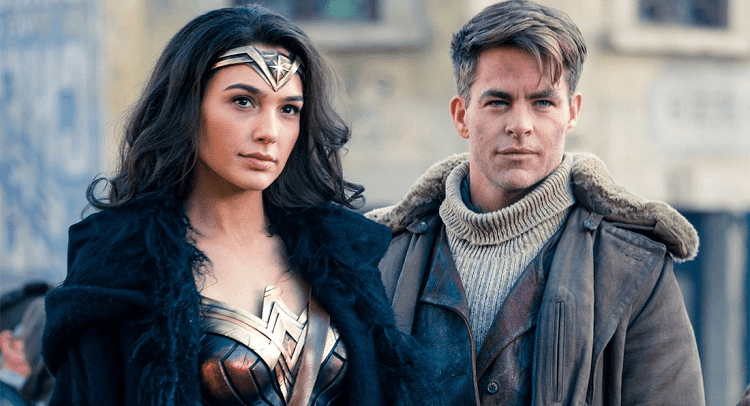
- Steve Trevor: The pilot who starts it all by crashing his plane into Themyscira. Most of the time, he is Diana’s romantic partner and always her ally. Steve is capable, loving, and kind. I love him and their relationship because he is not intimidated by a stronger woman.
- Etta Candy: Wonder Woman’s best friend. Etta is probably the character from this list that has undergone the most changes, from her looks, ethnicity, and sexuality. Still, no matter the version, she is a loyal woman always willing to help. Plus, I love how funny she is.
- Queen Hippolyta: Wonder Woman’s mother and the queen of Themyscira. She is a capable warrior and ruler, no matter if she’s a blonde or a brunette in the version you’re reading. I adore how her love and care for her daughter are evident, but she never lets that get in the way of her duty as queen. And there have been several times when these two motives clashed. It just shows she is a fantastic queen.
- Donna Troy: Wonder Woman’s sister, she would later take on the alias of Wonder Girl. Inspired by Diana’s actions in the Justice League, she joined the Teen Titans and made a career of her own.
Villains
- Cheetah aka Barbara Ann Minerva: There have been several versions of the Cheetah, but Barbara Minerva is the best. She is a formidable foe to Diana, but my favorite angle is when the author explores her prior friendship with Diana. Greg Rucka does that brilliantly in Rebirth’s “The Lies.”
- Ares: There is a reason Ares is Diana’s first foe in George Perez’s run and the movie. The God of War is the perfect foil for the heroine that believes not everything should be solved with violence. Among the villains, Ares has the most potential to explore Diana’s ideals in a story.
- Circe: The powerful and mischievous sorcerer, Circe provides another interesting lens at Wonder Woman. She is the result of blind hate for men, a trait that doesn’t solve the patriarchial problems. Diana acknowledges how many men mistreat women but chooses to deal with this more thoughtfully. This clash of views brings tremendous narrative tension. I love Circe and can’t wait for her to be adapted to the big screen.
- Veronica Cale: Wonder Woman’s own Lex Luthor; Veronica Cale is a powerful businesswoman hellbent on taking down the amazon. I didn’t care about Veronica for most of her history: her motivations were flat. However, that all changed in Rebirth’s “Godwatch,” and subsequent arcs further developed Veronica’s villainous motives, making me care for and thoroughly enjoy the character.
A Look Outside The Comic Book Pages
There have been several Wonder Woman adaptations in series, movies, and video games. Down below, I list some of my favorites.
The 70s Series and Lynda Carter’s Legacy

Before reading Wonder Woman comics, I became obsessed with the character through two other things: The 70s TV Show and the Justice League Animated series.
My father owned a video store, and my mom is a tv series and movie enthusiast. The Wonder Woman show was something she loved watching as a child, and she shared that joy with me through my father’s store DVDs. What else is there to say? This series makes me emotional.
The stories were silly, but it was all a lot of fun. As a little girl, having such a powerful woman as a role model did wonders for my self-esteem. I always had a soft spot for warrior women: my other childhood role model is none other than Xena, the Warrior Princess.
Then, there’s Lynda Carter: the woman is stunning to this day! She has a charisma that flows easily through the screen. Her portrayal of Wonder Woman is the first in my sacred trio, complemented by Susan Eisenberg – the voice actress from the Justice League series — and Gal Gadot.
This series definitely made my childhood better, and I love it for that.
Justice League Animated Series
My second source of Wonder Woman obsession, the Justice League, is one of the best superhero shows of all time. When I say this, I’m counting the live-action shows too. The excellent acting, distinctive art style, and mature writing make this a favorite of mine to this day.
After two seasons, the show was rebranded as Justice League Unlimited. Some call this a sequel, but I consider it a new season of the original. So when I talk about the series, I’m talking about the first two seasons and unlimited.
Everything on this show was spot on, including Wonder Woman. I could cite many iconic moments with this character in the series, but I’ll stick to three that come easily to my mind.
The first is the double-part episode “Paradise Lost.” In this series, Diana recruits her Justice League teammates to save Themyscira but pays a high cost. I remember the episode’s ending left me speechless and heartbroken when I first watched it.
The second is from Justice League Unlimited, “Hawk and Dove,” where Wonder Woman teams up with the title heroes to stop Ares. I like this one because it displays a furious Wonder Woman that wants to solve everything with violence.
This shows she is not perfect; after spending so much time in the men’s world, she’s prone to forgetting her ideals. Thankfully, by the end of the episode, she returns to more peaceful solutions.
Lastly, the episode Grudge Match has one of the series’s most iconic Wonder Woman moments. Hawkgirl, Vixen, Huntress, and Black Canary have to fight a mind-controlled Wonder Woman. I love the moment the heroines realize who they’ll have to fight, and their facial expressions go, “oh shit.” It’s hilarious.
Besides, this shows how powerful Wonder Woman is. She quickly took down 4 strong characters, who just weren’t more hurt at the end because Diana regained her senses during the fight.
The Big Screen
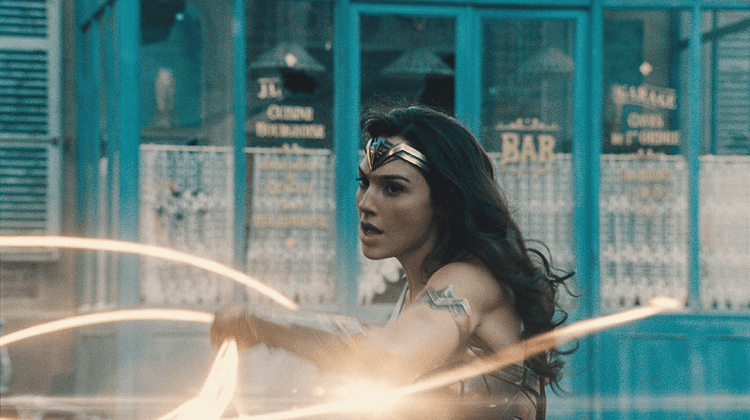
I remember how excited I was when I saw Batman V Superman in theaters. I stayed mesmerized the whole movie, but one moment took the cape for me.
It’s the final battle; Batman will be hit by a laser, then boom! Wonder Woman blocks the beams with her bracelets.
Everybody in the theater screams.
Finally, the biggest female hero of all debuted on the Big Screen.
After so many years of existence and God knows how many Superman and Batman movies, it was the time for DC’s third pillar.
Batman V Superman was a great introduction to Wonder Woman, but her 2017 solo movie was her consolidation. It brought everything a Wonder Woman movie needed, and to this day, it is the most acclaimed movie from the DC Extended Universe. Though the sequel, Wonder Woman 1984, wasn’t as well received, I enjoyed the movie a lot.
It is not as good as the first, but it’s a solid installment, and I can’t wait for the third one!
Honorable Mentions
If you want more adaptations of Wonder Woman, here are some of the best-animated films with the character. I chose the following movies either because she was the title character or had a vital role in the story.
- Justice League: The New Frontier(2008)
- Wonder Woman Animated movie(2009)
- Superman/Batman: Apocalypse(2010)
- Wonder Woman: Bloodlines (2019)
- Justice Society: World War II(2021)
Side note: in Justice League: The New Frontier, Wonder Woman, is voiced by Lucy Lawless, AKA Xena. My two childhood heroes combined in one!
Essential Reading List
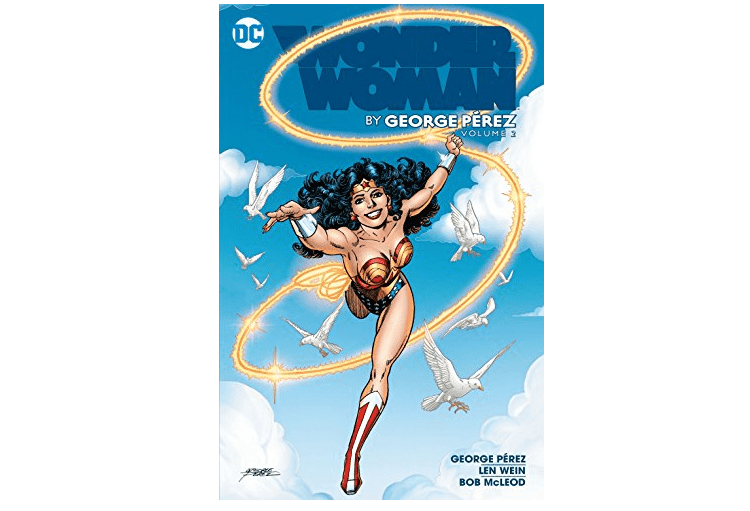
Now that you have all this information about Wonder Woman plus movies and series recommendations, let’s get back to comics. I compiled a list of the best Wonder Woman stories and definite runs for your delight.
I tried choosing things from various periods, so you have an eclectic scope. However, I must add that I’m not a fan of Golden age comics and the Silver and Bronze ages were a mixed bag for the character. Thus I have focused, with few exceptions, on stories from the 80s forwards.
Some people may disagree with me, but that’s where the best stories are.
The Long Runs
First, I have chosen starting points for those looking for a more extended read. This selection gives you three options with some of the best Wonder Woman writers.
- Wonder Woman Vol.2 #1-62: This is George Perez’s complete run on the character. I’ve already mentioned him several times because he changed Diana forever. If you want to start at an origin point and follow several stories about Wonder Woman, there’s no mistake with this choice.
- Wonder Woman Vol.3#14-44: At this point, you won’t start with an origin story but in the middle of Wonder Woman’s superhero career. Still, it is a great place to start. This is Gail Simone’s debut – one of my favorite authors — and also includes stories by other great writers. It is the right place to start if you want to read a modern portrayal of the character for the 21st century.
- Wonder Woman Vol. 4 #1-35: If you like gritty stories and Vertigo comics, you’ll love this run. You won’t start with Wonder Woman’s origin, but flashbacks will help you understand how this version differs from others. This run is the more fast-paced option if that’s something you like. Azzarello’s run is the one if you want something that will grab your attention from beginning to end.
The Best Stories
These are some of the best options if you want shorter stories to read instead of big runs.
- “Battle for Womanhood” (Wonder Woman Vol. 1 #5): I’m not a fan of the 40s comic books – I think they’re silly. Still, I recognize their value and will sometimes appreciate a specific story. That is the case with this issue. This is the quintessential example of William Marston’s stories that centered around empowering women.
- The Legend Of Wonder Woman: This is a good option for someone like me, who doesn’t enjoy the Golden Age period but recognizes its value. This series retells Marston’s vision for Wonder Woman with modern storytelling techniques. It’s the best of both worlds!
- Eyes Of The Gorgon (Wonder Woman Vol. 2 #206-#213): This is the story that made me a Greg Ruck fan. I love this arc because it shows Wonder Woman’s commitment to doing her best. Besides, it reminds me of a decisive Shiryu moment in Saint Seiya – one of my favorite characters from one of my favorite anime.
- JLA Golden Perfect(JLA #61-65): What would happen if Wonder Woman’s lasso of truth broke? This arc answers this troubling question in an incredible story.
- Year One(Wonder Woman Vol. 5 #2, 4, 6, 8, 10, 12, 14): As I’ve said before, this is the best Wonder Woman origin because it combines the best from all prior versions. Greg Rucka keeps the story interesting, even if we already know what will happen, while adding a few modern twists.
- The Lies(Wonder Woman Vol. 5 #1, 3, 5, 7, 9, 11; Wonder Woman: Rebirth #1): This is one of the most emotional Wonder Woman stories I’ve ever read. It puts Diana and Barbara’s relationship front and center to explore this friendship’s tragic end. It’s my favorite story with the Cheetah!
- The Hiketeia: You can’t make a Wonder Woman “best stories list” without The Hiketeia or A League Of One. It just wouldn’t be convincing. The Hiketeia creates a meaningful conflict between the amazon and the Dark Knight to explore the blurred lines between justice and duty.
- JLA, A League Of One: A powerful story that once more shows Diana’s selflessness. Wonder Woman is at her best here: she’s strong, intelligent, and heroic. Plus, the mythical background to this story is enriching and compelling.
Wonder Woman Loves All
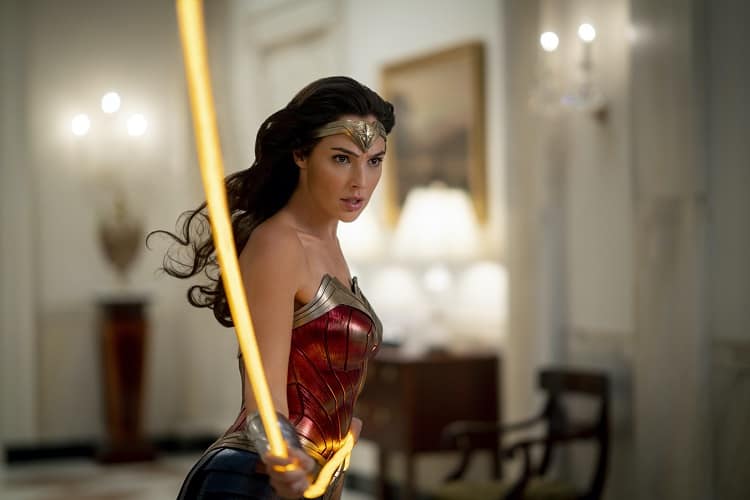
Wonder Woman loves everyone: she has stated that many times in comics. This love for humanity at large is what drives her to find peaceful solutions. However, in this section, I must address a specific part of this equation: her sexuality.
Wonder Woman has been portrayed as heterosexual for most of her publication history, despite coming from an island populated only by women. It would be logical to assume the amazons had relationships with one another; after all, romantic relations are present in every society.
In addition, when you remember the character was inspired by two queer women, Marston’s partners, the possibility of a sexuality other than straight becomes even more plausible.
Still, despite improvements in the last years, we live in a world where homophobia is ever-present. It made sense for Wonder Woman to be bisexual. Still, for many years, the only “confirmation” fans had was through the words of writers such as Gail Simone and Greg Rucka, but with no single comic page written about it.
Thankfully this has changed.
Grant Morrison’s Earth one was the first comic to show Diana in a relationship with another woman. Still, this series is not considered canon, so many could point to this as an alternate reality and not a vital part of Diana.
However, Greg Rucka destroyed doubts once and for all in Rebirth by addressing Diana’s relationship with women in the main continuity.
This was a joy for me. As a bisexual woman who grew up watching Wonder Woman, I was ecstatic to see official confirmation that my favorite hero was more like me than I had initially thought. One of DC‘s three pillars was now not only a symbol for women but the LGBTQIA+ community.
Of course, many people don’t agree with this and might say this is forced. But it isn’t. Forced was the reality where no character was gay in comics despite the large LGBTQIA+ community in real life.
To top it all off, Diana addressed how natural this was for her in Sensation Comics Featuring Wonder Woman, Chapter 48, when she officiated a marriage between two women. Superman said he didn’t know she was a proponent of gay marriage, and she replied, “Clark, my country is all women. To us, it’s not ‘gay’ marriage; it’s just marriage.”
I loved that reply!
It’s a sign of the times we can finally see this facet of Diana.
Wonder Woman is queer, and that’s a wonderful thing!
FAQ’s
Question: How was Wonder Woman Born?
Answer: Originally, her mother made a baby from clay and asked the Greek Gods to bring it to life. However, in the New 52, she was conceived naturally and is the daughter of Zeus.
Question: How did Wonder Woman Get Her Powers?
Answer: In most versions, she was born with them. When the Greek Gods gave life to the baby Queen Hyplolyta created from clay, they also blessed Diana with powers. However, in the New 52 version, Diana’s power comes from her father, Zeus.
Question: What’s Wonder Woman’s Weakness?
Answer: Wonder Woman is invulnerable to most things, but she can be hurt by piercing weapons.
Great Hera!
There’s no question Wonder Woman is the most famous female hero of all time. Her empathy and sensitivity helped influence a new generation of heroes. As one of DC’s main pillars, she is the center of many essential storylines and comic book debates. If you want to read more about the heroine, some of my favorite articles are Wonder Woman vs. Thor and Best Wonder Woman Gifts.
Check these out, and until next time!
Recommended Reads:
